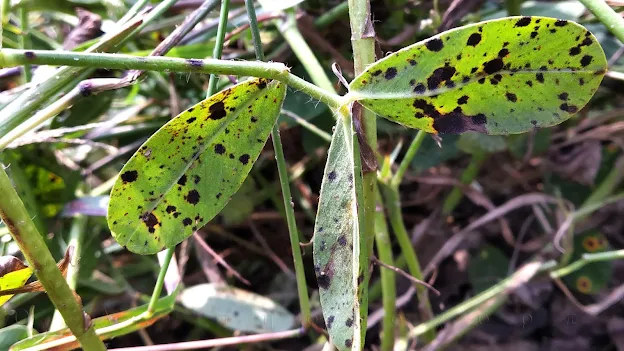
Symptoms:
Small, circular brown spots with yellow halos on leaves; premature leaf fall; reduced plant vigor and yield.
Chemical & Dosage (per acre):
Chlorothalonil 75% WP @ 1 kg per acre – Kavach, Daconil
Mode of Application:
Apply as a foliar spray at 40 days after germination and repeat every 15 days for a total of three sprays to effectively manage early leaf spot and ensure healthy groundnut growth.
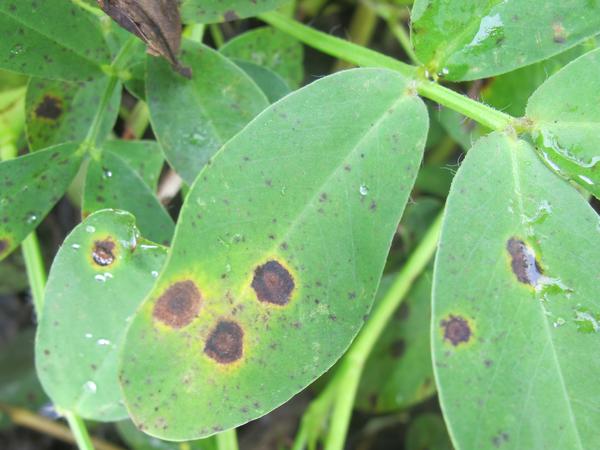
Symptoms:
Dark brown to black spots on leaves, usually without a yellow halo; severe defoliation can occur, leading to significant yield loss.
Symptoms are indicative of late leaf spot in groundnut caused by Phaeoisariopsis personata. Lesions often appear later in the crop cycle, starting from the lower leaves and progressing upward under favorable conditions like high humidity.
Chemical & Dosage (per acre):
Carbendazim 50% WP @ 400 g per acre + Mancozeb 75% WP @ 1 kg per acre – Bavistin + Indofil M-45
Mode of Application:
Apply as a foliar spray at 15-day intervals to effectively control late leaf spot and maintain healthy groundnut foliage.
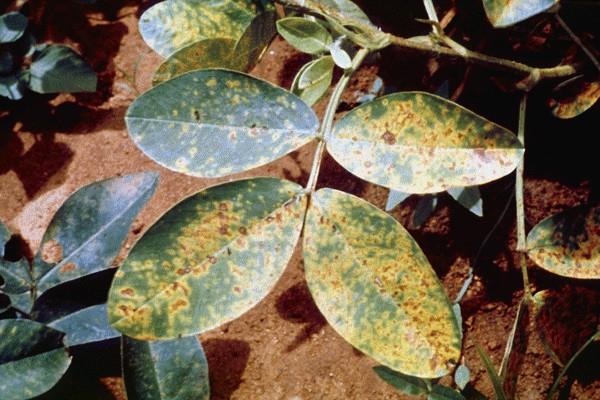
Symptoms:
Small reddish-brown pustules on the lower leaf surface cause yellowing and early leaf drop.
These are typical rust symptoms in groundnut caused by Puccinia arachidis. The disease progresses upward and can lead to significant defoliation and yield loss under favorable conditions such as prolonged leaf wetness and high humidity.
Chemical & Dosage (per acre):
Hexaconazole 5% EC @ 400 ml per acre – Contaf, Hexastar
Mode of Application:
Apply as a foliar spray at the first appearance of symptoms to effectively manage rust and protect groundnut crop health.
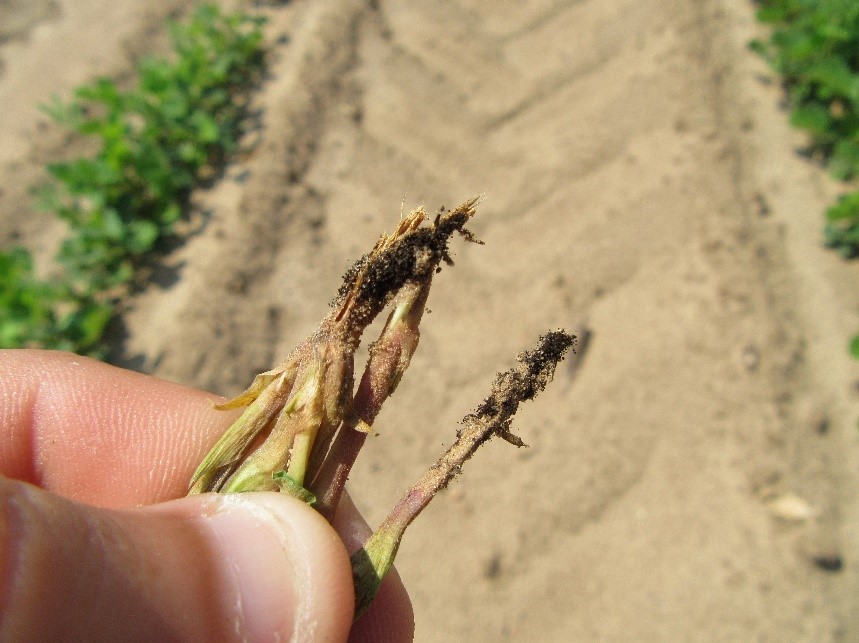
Symptoms:
Seedling wilt with blackening at the collar region leading to plant death.
Brown to black discoloration appears on the collar region. The affected area becomes soft, rotten, and may collapse, often covered by fungal growth. Seedlings or young plants may wilt and die rapidly, especially at or just above soil level.[1][4]
Chemical & Dosage (per acre):
Carbendazim 50% WP @ 400 g per acre (soil drench) – Bavistin
Mode of Application:
Soil drench at sowing to prevent collar rot.
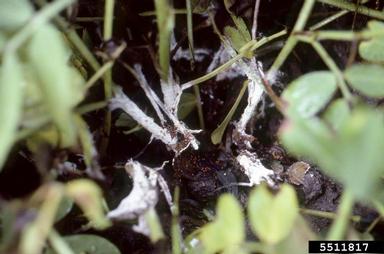
Symptoms:
Wilting and white mycelial growth at the stem base, leading to plant collapse.
Typical symptoms of stem rot in groundnut, caused by Sclerotium rolfsii. Affected plants show pale yellowing, wilting, and soft rot at the collar region with visible white fungal growth and mustard-sized sclerotia under humid conditions.
Chemical & Dosage (per acre):
Tebuconazole 25% EC @ 400 ml per acre – Folicur, Raxil
Mode of Application:
Soil drench or foliar spray for effective stem rot management.
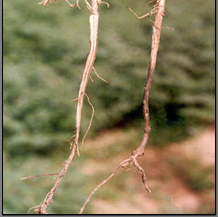
Symptoms:
Yellowing, wilting, root blackening, and plant death.
Initial symptoms often include drooping and yellowing of leaves, rapid wilting, and darkened or brittle roots. Affected plants dry up and die, frequently showing blackened roots and sometimes black sclerotial bodies inside the decaying tissues. The disease is most prominent during high temperatures and moisture stress, especially at late flowering and podding stages. Caused by Macrophomina phaseolina, dry root rot can result in severe yield loss if left unmanaged.[1][6][8]
Chemical & Dosage (per acre):
Trichoderma viride @ 2.5 kg/ha (biocontrol)
Mode of Application:
Soil application at sowing for dry root rot management.
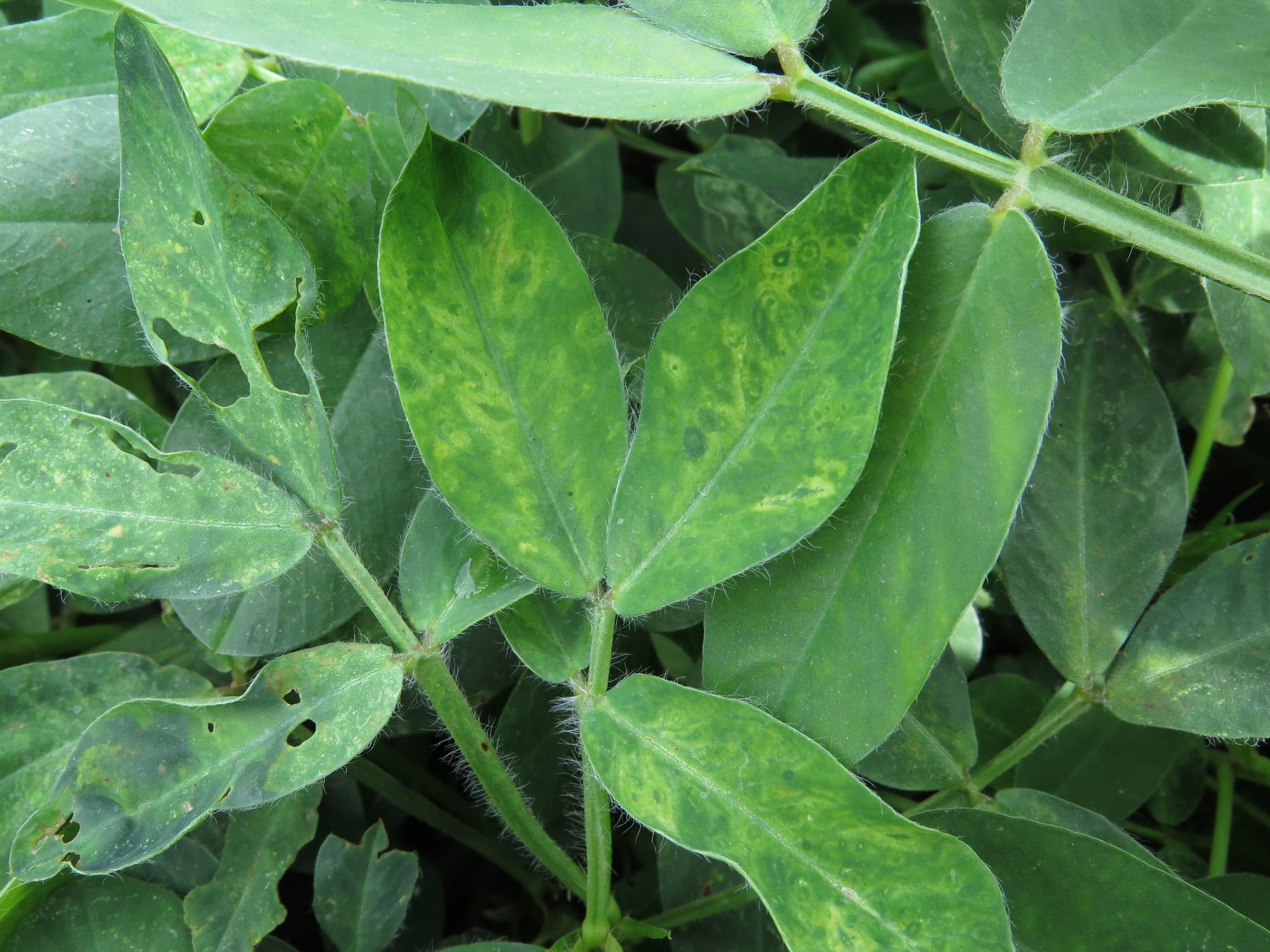
Symptoms:
Chlorosis and necrosis of buds, stunted growth, and bushy plants.
Thrips feeding causes chlorosis (yellowing), necrosis (dark dead patches) on buds and leaves, stunted growth, bushy appearance, leaf curling, crinkling, and white or silver streaks on leaves. These symptoms are commonly linked with Peanut Bud Necrosis Virus transmission by thrips, especially in hot, dry weather[2][7][6].
Chemical & Dosage (per acre):
No direct chemical for the virus; control thrips with Fipronil 5% SC @ 400 ml per acre – Regent, Osheen[7].
Mode of Application:
Foliar spray for vector (thrips) control.
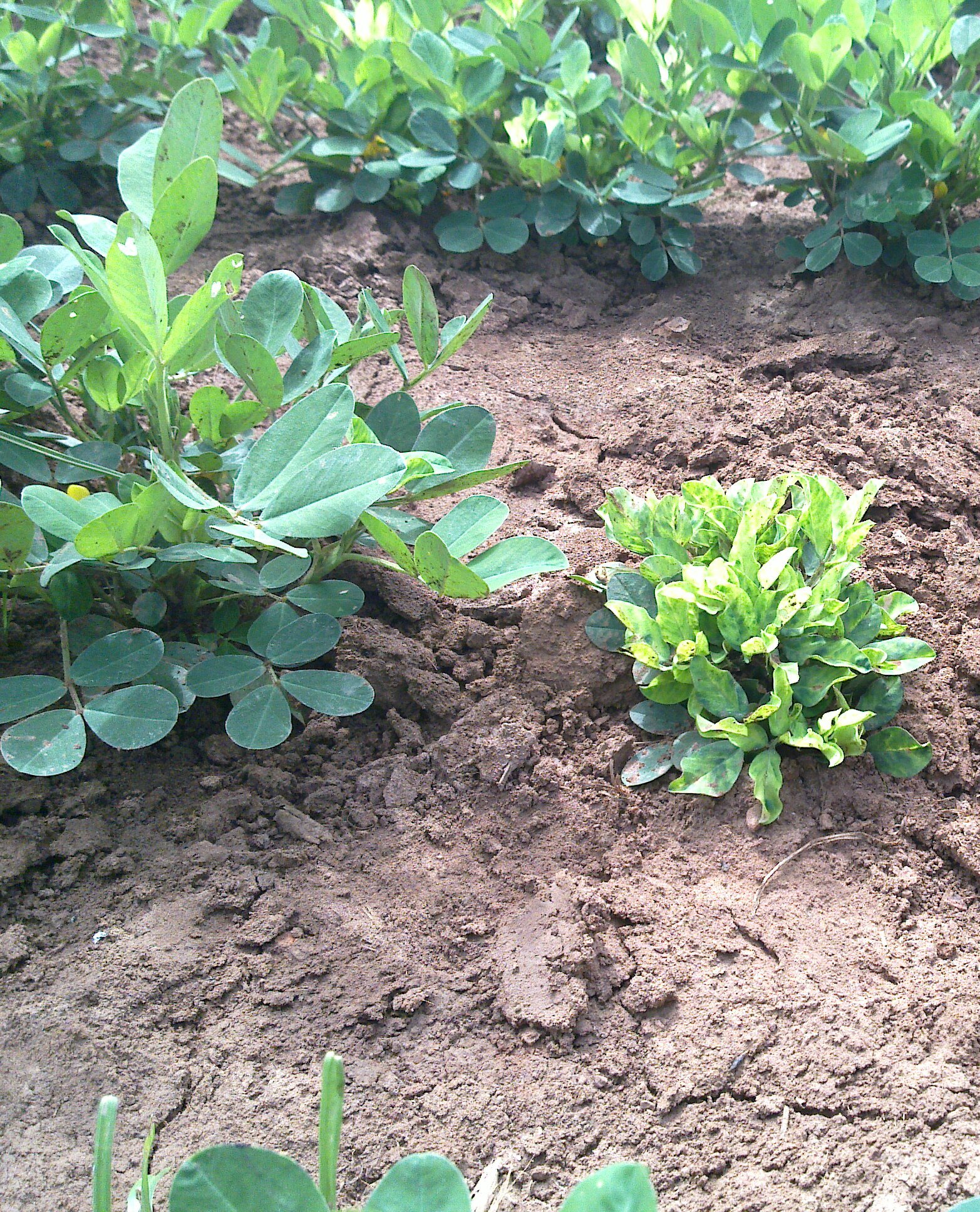
Symptoms:
Yellow mottling, stunted plants, and bushy appearance.
These are typical symptoms of viral infections such as **Groundnut Stripe Virus** or **Rosette Virus**, commonly transmitted by aphids. Infected plants may show reduced vigor, shortened internodes, and abnormally proliferated shoots, leading to a bushy growth habit.
Chemical & Dosage (per acre):
No direct chemical; control aphids with Imidacloprid 17.8% SL @ 100 ml per acre – Confidor, Admire
Mode of Application:
Foliar spray for vector control.
Symptoms:
Yellow-green mould on pods/seeds, shriveled kernels.
These symptoms are typical of **aflatoxin contamination** caused by the fungus Aspergillus flavus. It infects groundnut pods during pre- and post-harvest stages, especially under high temperature and moisture conditions. Aflatoxins are harmful mycotoxins affecting seed quality and marketability.
Chemical & Dosage (per acre):
No direct chemical; avoid moisture, dry pods well.
Mode of Application:
Post-harvest management.
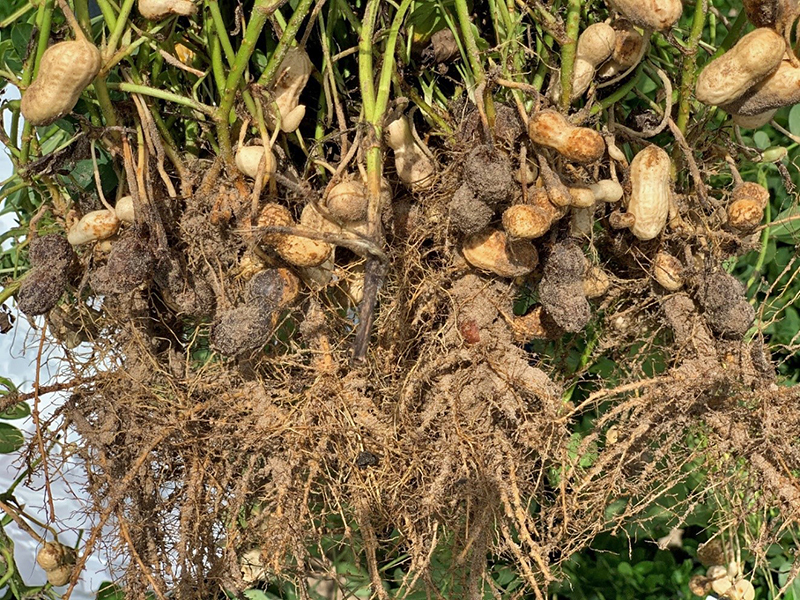
Symptoms:
Pod decay, rotting, and shriveled pods.
These are typical symptoms of **pod rot** in groundnut, often caused by soil-borne fungi such as Rhizoctonia solani, Fusarium spp., and Aspergillus niger. Infected pods become soft, discolored, and may dry into shriveled shells with poor or no kernel formation, especially under excessive moisture and poorly drained soils.
Chemical & Dosage (per acre):
Carbendazim 50% WP @ 400 g per acre – Bavistin
Mode of Application:
Soil drench or foliar spray for pod rot control.